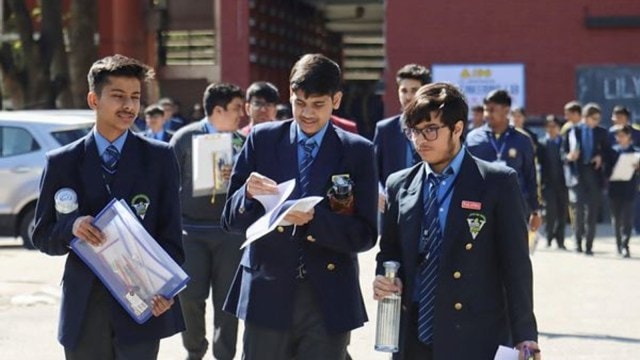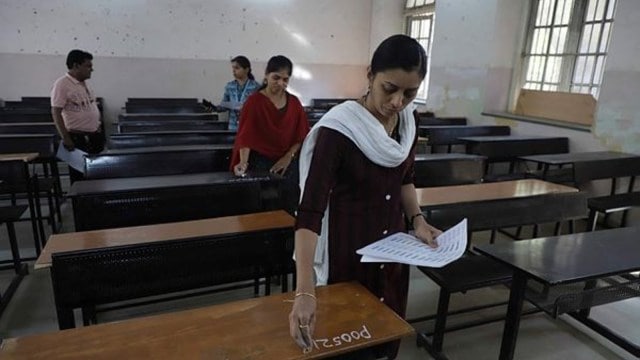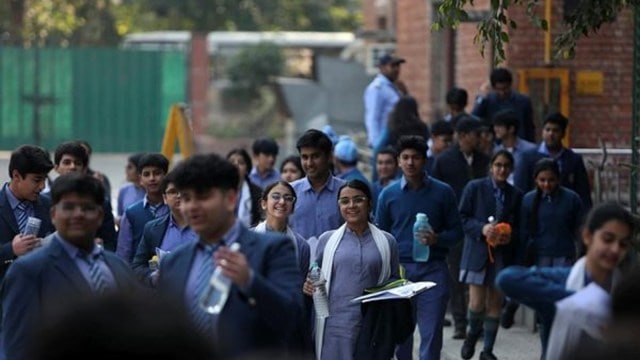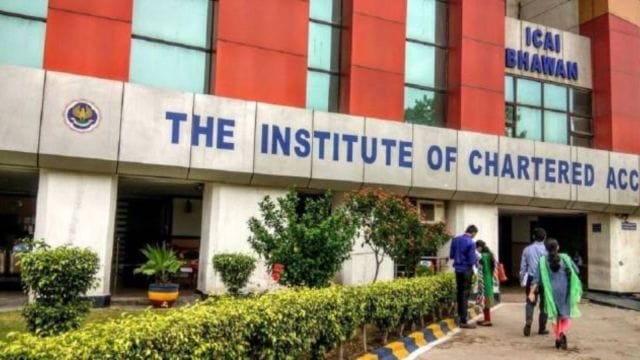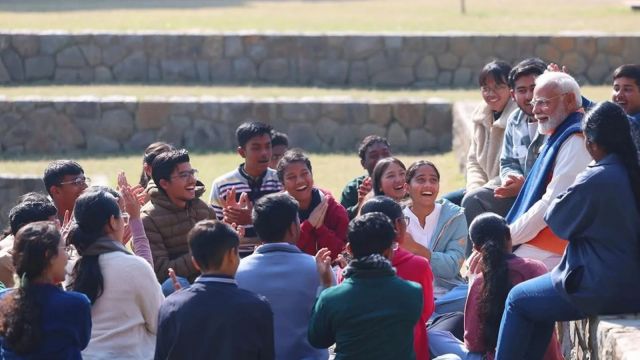
UPSC Essentials | Daily subject-wise quiz : Economy MCQs on alternative investment funds, CPI, cotton and more (Week 85)Sign In to read
UPSC Essentials brings to you its initiative of subject-wise quizzes. These quizzes are designed to help you revise some of the most important topics from the static part of the syllabus. Attempt today’s subject quiz on Economy to check your progress. Come back tomorrow to solve the International Relations Quiz.
With reference to the Consumer Price Indices (CPI), consider the following statements:
1. It measures changes over time in the general level of prices of goods and services that households acquire for consumption.
2. It is widely used as a macroeconomic indicator of inflation.
3. It is used for indexing dearness allowance to employees for increases in prices.
How many of the statements given above are correct?
(a) Only one
(b) Only two
(c) All three
(d) None
Explanation
— In October, the Consumer Price Index (CPI) rose to a 14-month high of 6.21%, up from 5.5% in September. The RBI has been concentrating on maintaining retail inflation at 4% on a long-term basis.
— Consumer Price Indices (CPIs) track changes in the overall level of prices for goods and services purchased by households for consumption. Hence, statement 1 is correct.
— CPI statistics are widely used as a macroeconomic indicator of inflation, as a tool for governments and central banks to manage inflation and monitor price stability, and as deflators in national accounts. Hence, statement 2 is correct.
— CPI is often used to index employees’ dearness allowances in response to price increases. The CPI is consequently regarded as one of the most important economic indicators. Hence, statement 3 is correct.
— Since January 2011, the Central Statistics Office (CSO), Ministry of Statistics and Programme Implementation, has released Consumer Price Indices (CPI) on a base of 2010=100 for all of India and States/UTs, separately for rural and urban areas, and combined every month.
Therefore, option (c) is the correct answer.
(Other Source: http://www.data.gov.in)
Consider the following statements about Special Non-Resident Rupee Account (SNRR account):
1. Opening of SNRR accounts by Pakistan and Bangladesh nationals and entities incorporated in Pakistan and Bangladesh requires prior approval of the Reserve Bank.
2. The business of the account holder can operate no longer than four years.
3. SNRR accounts can be current, savings, recurring or Fixed Deposit.
Which of the statements given above is/are correct?
(a) 1 and 2 only
(b) 2 and 3 only
(c) 3 only
(d) 1 only
Explanation
— Any person resident outside India with a business interest in India can open a Special Non-Resident Rupee Account (SNRR) with an authorised dealer to conduct legitimate rupee transactions under the provisions of the Act, rules, and regulations enacted thereunder.
— The opening of SNRR accounts by Pakistan and Bangladesh nationals, as well as entities incorporated in Pakistan and Bangladesh, requires prior Reserve Bank approval. Hence, statement 1 is correct.
— SNRR Accounts are non-interest bearing. Hence, statement 3 is not correct.
— Permissible Transactions: Debits and credits that are specific/incidental to the account holder’s anticipated business activity.
— Tenure: Concurrent with the contract/duration of operation/business of the account holder, and no longer than seven years, unless approved by the Reserve Bank. Hence, statement 2 is not correct.
Therefore, option (d) is the correct answer.
(Other Source: website.rbi.org.in)
Which of the following statements is not correct with reference to cotton in India?
(a) It has a roughly two-thirds share of India’s total textile fibre consumption.
(b) Leaf miner is a monophagous pest that feeds mainly on cotton.
(c) It is a semi-xerophyte.
(d) It can handle temperatures up to 43 degrees Celsius.
Explanation
— One of India’s most significant cash crops and sources of fibre, cotton is vital to the nation’s industrial and agricultural economies. Cotton has a roughly two-thirds share in India’s total textile fibre consumption.
— Ten major cotton-growing states in India are divided into three zones: north, centre, and south. Rajasthan, Haryana, and Punjab comprise the North Zone. Gujarat, Maharashtra, and Madhya Pradesh are all in the central zone. The South Zone comprises the states of Tamil Nadu, Telangana, Karnataka, and Andhra Pradesh.
— Cotton crops are particularly susceptible to pests and illnesses. The pink bollworm (PBW) is a monophagous pest that primarily consumes cotton. The Bt poisons were originally intended to guard against both Helicoverpa and PBW caterpillars, which burrow into the cotton plant’s bolls or fruits and produce lint and seeds.
— Cotton, a semi-xerophyte, is grown in tropical and subtropical climates. A minimum temperature of 15 degrees Celsius is essential for optimal germination in the field. The optimum temperature for vegetative growth is 21-27 degrees Celsius, and it can handle temperatures up to 43 degrees Celsius; however, temperatures below 21 degrees Celsius are damaging to the crop.
Therefore, option (b) is the correct answer.
(Other Source: http://www.nfsm.gov.in)
With reference to the inflation, consider the following statements:
1. It is defined as the rate of increase in prices over a given period of time.
2. An unstable inflation enhances the purchasing power of the people.
3. The government has given the RBI the target to maintain inflation in the 12-16 per cent band.
Which of the statements given above is/are not correct?
(a) 2 only
(b) 1 and 2 only
(c) 3 only
(d) 2 and 3 only
Explanation
— “Stable inflation, often known as price stability, is beneficial to both individuals and the economy. It serves as a foundation for long-term growth, increases people’s purchasing power, and creates a stable climate for investment,” Das stated at the High-Level Policy Conference of Central Banks from the Global South. Hence, statement 2 is not correct.
— The government has set a target for the RBI to keep inflation between 2 and 6 per cent. The RBI has been concentrating on maintaining the CPI at 4% on a long-term basis. Hence, statement 3 is not correct.
— Inflation is defined as the rate at which prices increase over time. Inflation is often defined as a broad measure, such as an increase in total prices or the cost of living in a country. Hence, statement 1 is correct.
— The Governor noted that price stability is equally important as growth in allowing economic agents to plan ahead, reducing uncertainty and inflation-risk premiums, and encouraging savings and investment. All of these factors will increase an economy’s potential growth rate.
Therefore, option (d) is the correct answer.
With reference to the alternative investment funds (AIFs), consider the following statements:
1. It means any fund established or incorporated in India which is a privately pooled investment vehicle.
2. Banks and NBFCs, which are Regulated Entities (RE) under the Reserve Bank of India (RBI), cannot invest in units of AIFs.
Which of the statements given above is/are correct?
(a) 1 only
(b) 2 only
(c) Both 1 and 2
(d) Neither 1 nor 2
Explanation
— The Reserve Bank of India (RBI) has directed banks, non-banking financial companies (NBFCs), and other lenders not to invest in any scheme of alternative investment funds (AIFs) that has downstream investments in a debtor company.
— An AIF means any fund established or incorporated in India which is a privately pooled investment vehicle, and which collects funds from sophisticated investors, whether Indian or foreign, for investing it in accordance with a defined investment policy for the benefit of its investors. Hence, statement 1 is correct.
— Banks and NBFCs, which are Regulated Entities (RE) under the Reserve Bank of India (RBI), make investments in units of AIFs as part of their regular investment operations. Hence, statement 2 is not correct.
— Venture capital funds, angel funds, infrastructure funds, private equity funds and hedge funds, among others, are AIFs.
Therefore, option (a) is the correct answer.
Daily Subject-wise quiz — History, Culture, and Social Issues (Week 85)
Daily subject-wise quiz — Polity and Governance (Week 85)
Daily subject-wise quiz — Science and Technology (Week 85)
Daily subject-wise quiz — Environment and Geography (Week 85)
Daily subject-wise quiz — Economy (Week 84)
Daily subject-wise quiz – International Relations (Week 84)
Subscribe to our UPSC newsletter and stay updated with the news cues from the past week.
Stay updated with the latest UPSC articles by joining our Telegram channel – IndianExpress UPSC Hub, and follow us on Instagram and X.

 Posts
Posts Sign up as a Teacher
Sign up as a Teacher
